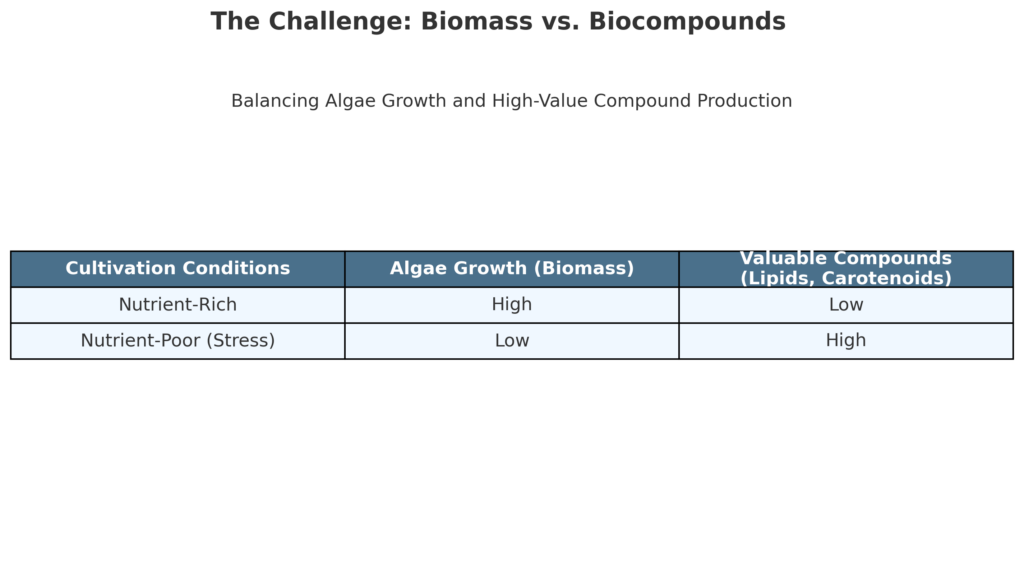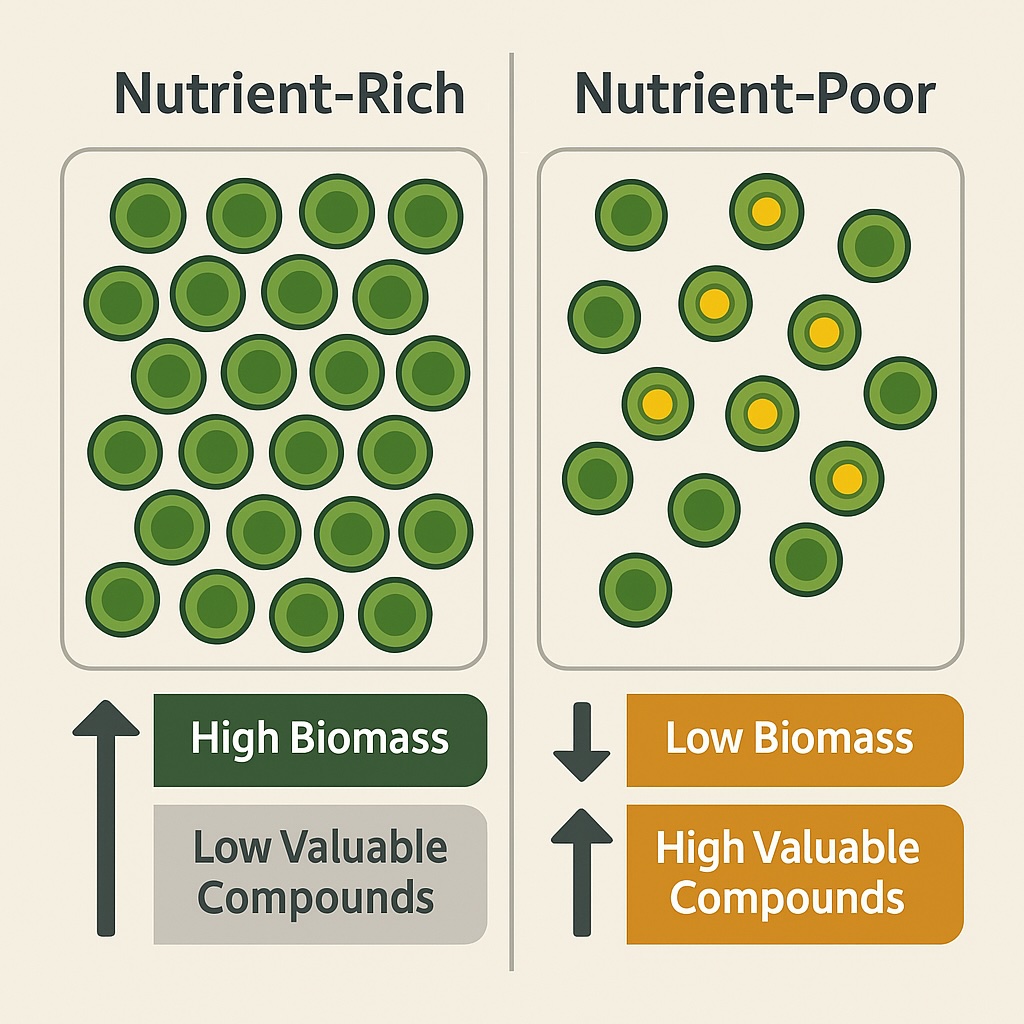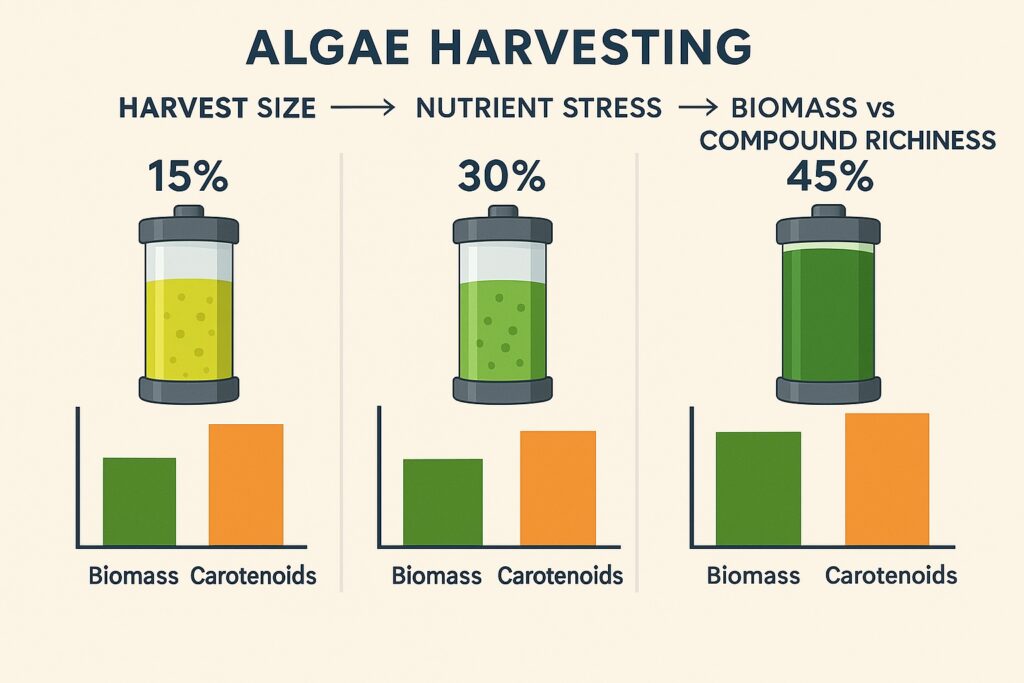Introduction: Why the Balance Matters
Commercial algae cultivation faces a central challenge: choosing between maximizing biomass or boosting valuable biocompounds such as lipids and carotenoids. In simple terms:
- Nutrient-rich conditions: High algae biomass but fewer valuable biocompounds.
- Nutrient-poor (stress) conditions: More valuable compounds but lower overall algae growth.
Mastering this delicate balance is key to any successful, profitable algae operation.

Our Research: Strategic Cultivation Management
At Algae Analytics, we conducted targeted experiments with Nannochloropsis salina in greenhouse bioreactors. By systematically varying harvest volumes and nutrient conditions, we established clear strategies for balancing biomass and biocompound production:
- Harvest Volumes Tested: 15%, 30%, and 45%
- Growth Media: Standard F/2 media and wastewater-derived media
- Monitoring Tools: Optical density (OD680/750), lipid and carotenoid profiling
(Infographic Suggestion: Diagram of harvest volumes and growth media options.)
Key Findings in Simple Terms
Our experiments revealed:
- Larger harvest volumes (45%) yielded higher overall biomass and, when managed properly, enhanced lipid and carotenoid production.
- Short nutrient stress periods after harvesting significantly increased valuable compound production without substantial biomass loss.
- Real-time monitoring (OD680/OD750) efficiently tracked nutrient conditions, enabling proactive cultivation management.

What Does Recent Research Say?
Our results align with current industry research, confirming that managed nutrient stress optimizes the production of valuable biocompounds without significantly compromising biomass production.
Practical Takeaways for Algae Producers
Implementing these strategies allows algae growers to:
- Efficiently balance algae biomass and biocompound quality.
- Strategically use nutrient and harvesting methods tailored to lucrative markets such as biofuels, nutraceuticals, and cosmetics.
- Enhance profitability through informed cultivation choices.
Next Steps and Recommendations
We recommend:
- Developing customized cultivation strategies to align with specific market objectives, including single or multi-stage methods.
- Leveraging real-time monitoring tools for responsive cultivation management, ensuring precise control of nutrient status.
- Regularly evaluating financial outcomes to maintain cost-effective production strategies—prioritizing biomass quality.
Conclusion: Finding Your Optimal Balance
Algae Analytics delivers scientifically-backed, practical methods for efficiently managing the balance between biomass and valuable compound production. Achieving this equilibrium is critical for profitability and market success in any algae cultivation enterprise.
🟫 Ready to Improve Your Algae Operation?
Contact Algae Analytics today and discover how our strategic insights can enhance your operation’s success.





